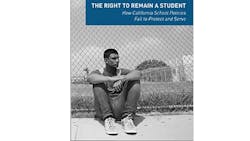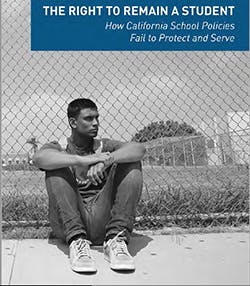California schools rely too heavily on police for disciplinary issues, ACLU says
Schools in California rely too heavily on police to handle minor violations that should be resolved by staff, and police often mishandle the situation, the ACLU of California asserts in a new report.
The resulting police-student interactions disproportionately affect low-income students, students of color and students with disabilities, the civil rights group says, and thousands of students have been funneled unnecessarily into the school-to-prison pipeline.
The civil rights group also found that most districts give staff complete discretion to summon police to intervene in student misbehaviors that, the ACLU believes, should be handled by school staff such as administrators or counselors.
“When school officials lack proper guidance, they may resort to calling police officers to handle routine student conduct, which results in students being criminally cited or arrested rather than being provided with more effective and less stigmatizing school-based interventions,” the ACLU says.
The ACLU’s position is that no schools should have police officers permanently assigned to a campus. But because the presence of law enforcement in schools is likely to continue, the group says it is critical for districts to develop clear policies on officers’ roles on campuses.
“As long as police remain on campus, districts must adopt and enforce policies that clearly guide school staff on whether and when they can request police assistance,” the report recommends. “Similarly, district policies must establish procedures that protect students’ rights during interactions with police.”
Among the report’s recommendations:
- Counselors and other school employees should handle bullying, harassment, disruptiveness, vandalism, drug and alcohol abuse, and other non-violent incidents.
- Law enforcement officers seeking to interview students on campus must first secure consent from the principal and the student’s parents or guardians. The principal should provide consent only when the police officer has a judicial court order, except in cases where the student presents a real and immediate physical threat.
- Districts should adopt clear policies about when police officers can arrest students or remove them from campus.
- Districts should authorize a student’s arrest or removal from campus only if an officer has a warrant or court order, or if the student presents a real and immediate physical threat. The principal and parents or guardians should be notified immediately of the arrest.
- Districts should establish a formal complaint process so that students, families, and community members may report incidents of possible police misconduct.
- Schools should divert funding away from law enforcement and security officers and invest more in counselors, teachers, and restorative justice strategies.
About the Author
Mike Kennedy
Senior Editor
Mike Kennedy, senior editor, has written for AS&U on a wide range of educational issues since 1999.

